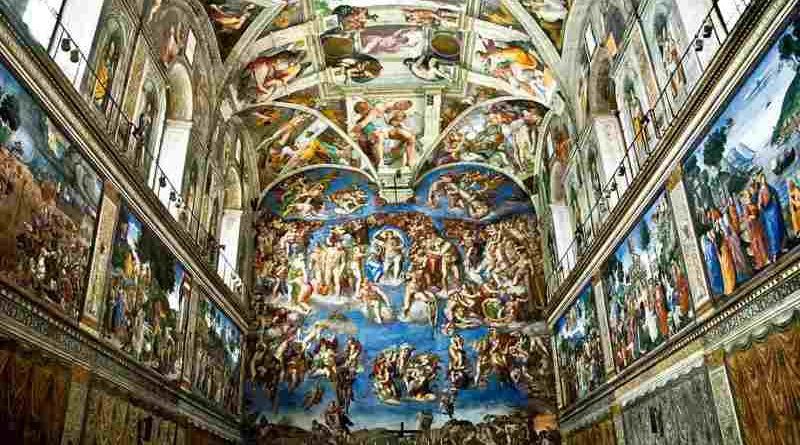Cultural importance of the Vatican City.
The Vatican City, also known as the Holy See, is one of the most significant cultural sites in the world. As the spiritual center of the Catholic Church, the Vatican City holds a unique place in the hearts and minds of people all over the globe. Its cultural importance can be seen in its art, architecture, history, and influence on society. In this essay, we will explore the cultural importance of the Vatican City in depth.
History of the Vatican City
The history of the Vatican City dates back to the fourth century when Emperor Constantine declared Christianity to be the official religion of the Roman Empire. In 313 AD, he issued the Edict of Milan, which granted religious freedom to Christians and marked the beginning of the Christianization of Rome. In the fifth century, the city of Rome was sacked by the Visigoths, and the Papacy became the dominant political and spiritual force in the city.
Over the centuries, the Vatican City has been the site of numerous historical events. It was the home of the Pope, the leader of the Catholic Church, who played a pivotal role in shaping the political and religious landscape of Europe. The Vatican City was also the site of important religious councils, such as the Council of Trent, which took place in the 16th century and helped to shape the Catholic Church as we know it today.
Art and Architecture of the Vatican City
One of the most significant cultural contributions of the Vatican City is its art and architecture. The Vatican Museums, which contain some of the most important works of art in the world, are a testament to the city’s cultural importance. The museums contain works by some of the greatest artists in history, including Michelangelo, Raphael, and Leonardo da Vinci.
The Sistine Chapel, located within the Vatican Museums, is one of the most famous works of art in the world. It was painted by Michelangelo in the early 16th century and is considered a masterpiece of Renaissance art. The chapel’s ceiling is adorned with images from the Book of Genesis, including the iconic image of God reaching out to touch Adam’s finger. The Sistine Chapel is also home to Michelangelo’s Last Judgment, a monumental fresco that covers the entire altar wall.
Another significant work of art within the Vatican City is St. Peter’s Basilica, one of the largest and most important churches in the world. The basilica was designed by some of the most prominent architects of the Renaissance, including Bramante, Michelangelo, and Bernini. The church’s dome is one of the most recognizable landmarks in Rome and is a testament to the city’s architectural and engineering prowess.
Religious Significance
The Vatican City is also of great religious significance, particularly for Catholics. The city is the seat of the Pope, the leader of the Catholic Church, and is considered the spiritual center of the faith. The Pope is seen as the successor of St. Peter, the apostle who is believed to have been the first bishop of Rome. As such, the Vatican City is the heart of the Catholic Church and is revered by millions of Catholics worldwide.
The Vatican City is also the site of numerous religious rituals and ceremonies, including the election of a new Pope. The Sistine Chapel is the location of the Papal conclave, where the cardinals of the Catholic Church gather to elect a new Pope. The election of a new Pope is a significant event in the life of the Church and is watched by millions of people around the world.
Influence on Society
The cultural significance of the Vatican City is not limited to the art, architecture, and religious significance of the city. The Vatican City has had a profound impact on society as a whole, particularly in the areas of social justice and human rights.
The Catholic Church has been a vocal advocate for social justice and human rights for centuries. The Church’s teachings on issues such as poverty, war, and discrimination have helped to shape public opinion and influence political discourse around the world. The Vatican City is also the site of the Pontifical Council for Justice and Peace, an organization dedicated to promoting peace and justice in the world.
The Vatican City’s influence on society can also be seen in its role in diplomacy. The Holy See, the governing body of the Vatican City, has diplomatic relations with over 180 countries and is a member of numerous international organizations, including the United Nations. The Holy See has been a strong advocate for peace, disarmament, and the protection of human rights on the global stage.
In recent years, the Vatican City has also been at the forefront of efforts to combat climate change. Pope Francis, the current Pope, has spoken out on the issue of climate change and has urged world leaders to take action to protect the environment. The Vatican City has also installed solar panels on the roof of the Paul VI Audience Hall, one of the main buildings in the city, as a symbol of its commitment to sustainability.
Conclusion: In conclusion, the cultural importance of Vatican City cannot be overstated. The city’s art, architecture, history, and religious significance have made it one of the most important cultural sites in the world. The Vatican City is a testament to the power of faith, art, and culture to shape the world around us.




